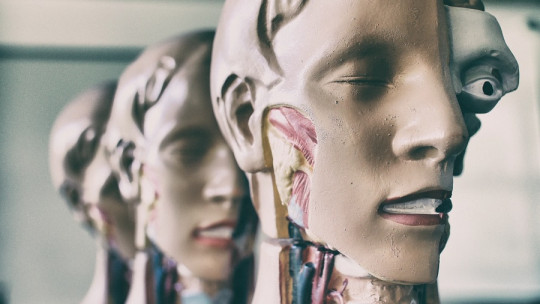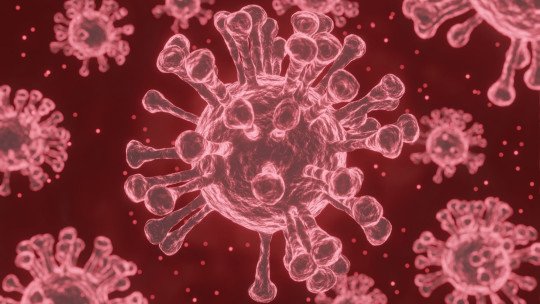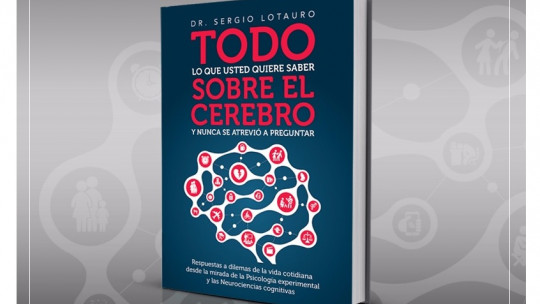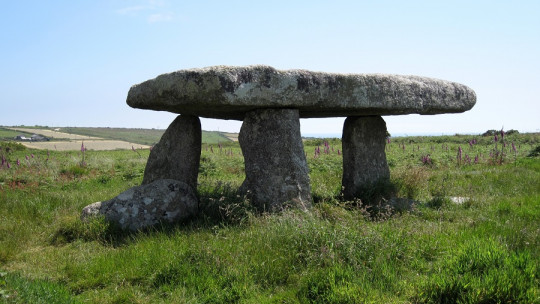The human body is a very complex thing and, every year, scientists find something new and very striking, which makes us question to what extent we know our organic packaging.
To help you learn a little more about our body here We will see 30 curiosities about the human body in addition to explaining some details about them.
30 curiosities about the human body
Next we will see a few interesting curiosities about the human body.
1. The bone and bigger
In the human body there are bones of all types of length, but the longest is, without a doubt, the femur. This bone is found in both legs, and It has an average length of 26.74% the height of the person although the proportion varies depending on sex and ethnicity.
It is a particularly useful bone in anthropology, since it is what allows us to estimate the height of a person, even if only this bone of theirs is preserved.
2. Smaller bone
You cannot talk about the largest bone without mentioning the smallest. In this case we are talking about the tiny stapes, a small bone that is found in the ear and has a length of between 2.5 and 3 centimeters.
3. Our eyes change as we grow
At birth, most children have light eyes, many of them blue.
However, Those who have parents with darker eyes, when exposed to the sun’s rays, generate more melanin than children of parents with light eyes turning their eyes the same color as their parents.
4. Penis size
On average, the erect human penis is three times the size of the thumb. On average, the flaccid penis measures about 9 cm, while the erect penis is 13 cm. However, if we want to get more specific, we must talk about the differences found between races.
On average, in Caucasian people the penis measures about 13 cm, while black Africans have it the longest, at about 17 cm, and Asians have the smallest, at about 10 cm.
5. Our aroma
Just as each of us has a characteristic face, we also generate a different smell. Our aroma is a sign that can identify us given that the human nose is capable of associating up to 50,000 different aromas, and you can perfectly recognize someone just by inhaling their smell.
The reason we smell different is due to several factors. Among them is genetics, in addition to our diet and, of course, our body hygiene.
6. How much flatulence do we expel?
When we talk about human beings expelling gas, we are not only referring to the breathing process. Flatulence, which is the finest way to refer to these smelly gases, They are issued an average of 14 times per day/person In more specific terms, our winds represent between 0.5 and 2 liters of gas daily.
7. The longest organ
The longest organ is the small intestine, which measures up to 3 meters while the person is alive. When it dies it expands, reaching between 7 and 8 meters in length.
8. We are a living world
Human beings and, in general, the vast majority of animals, We are a real living world for billions of microorganisms At a microscopic level, the number of cells and bacteria that inhabit and make up our body is very high. It is estimated that there are between 10 and 50 billion cells in the body and that approximately three hundred million die every 60 seconds.
About 32 million bacteria live in every centimeter of skin, the vast majority of which, about 95%, are harmless. As for the mouth, up to 40 thousand bacteria can be found. In fact, when we don’t kiss, we transmit about 280 different types of bacteria.
There are so many bacteria that live in us that If they were all collected and put in a bag, it would weigh two kilos more
9. Life after being beheaded
Although this fact has not been able to be rigorously demonstrated, given how unethical it would be to verify it, it has been said that in the event that a person is decapitated, the head will show some signs of life up to 20 seconds later
It is not known whether the head is still conscious in those seconds, nor is it possible to ask what it thinks or what it feels given that it does not have vocal cords to make any sound, in addition to the fact that neck muscles and breathing are required to be able to speak.
10. When we die we weigh less
When a person dies, they almost immediately lose about 21 grams. This may be material for the most superstitious, who believe in the human soul, however there is a scientific explanation When we die we quickly deflate, releasing gases from the stomach and lungs.
After a few hours, other chemical processes occur that also alter the weight of the corpse, swelling, making it smell bad and even make strange noises.
11. How many muscles do we move when making gestures?
There are muscles in the face, no one has any doubts about that, the question is how many of them are involved in each of the gestures we make in our daily lives. When we smile we use 17, while when we frown there are many more, up to 43. When we get angry, around 37 are used, and they are also the same when we cry
So now you know. Instead of buying products from the teleshop to do facial exercises, the healthiest and most economical thing is to get excited.
12. Where are there more bones?
Of the total of 206 bones that an adult human being has, about a quarter of them are found in the feet.
Each foot has 26 bones these being: seven tarsal bones (talus, calcaneus, scaphoid, cuboid and the three wedges), five metatarsal bones and fourteen phalanges, three for each finger, except the first which has two.
13. Tongues and fingerprints are unique
Fingerprints have become one of the most effective means of identifying a person.
Each person has their own, and it is not a trait that can be inherited nor does it depend on genetics so not even identical twins share fingerprints.
The same thing happens with the human language. Each person has a different one, with its more or less marked convolutions, its own shape and the distribution of taste buds.
14. The force of a human bite
Although we are not crocodiles, one of the animals whose jaws are capable of destroying the bones, cartilage and tissues of their poor prey, the force of our bite is nothing short of anything.
The absolute strength of the muscles involved in this process, if it could be channeled in a single direction, would be 195 kilos
15. Eyebrow hairs
Although there are people with very hairy eyebrows and others with very thin eyebrows, it can be indicated that, on average, People usually have about 250 hairs on each of them
The lifespan of these integumentary structures is about 4 months, and their growth factor is relatively fast.
16. More bones at birth
There are differences between the number of bones when we are born and when we have reached adulthood. By the time we have left the womb and are already showing our first signs of life as living beings, we have about 300 bones.
However, As we grow, some of these end up welding together, as is the case with the bones of the skull causing the number, when they reach adults, to be reduced to about 206.
But curiously there are bones that newborns do not have while adults do. An example of this is the kneecaps, which form between 6 and 12 months of life.
17. Blinking: a small gesture of the eye, a great function for the body
It has been calculated that, on average, we blink between 15 and 20 times per minute This fleeting action is very important, since it prevents the eye from accumulating dust, in addition to hydrating it.
If we did not do this small gesture every now and then, our eyes could become red, inflamed, be more prone to dryness and infections, and we would run the risk of losing them.
18. Five senses: lie!
Although traditionally in school we have been taught that there are five senses of the human body (hearing, taste, smell, sight and touch) in reality Human beings have more senses
As today research is still not clear about how many senses we have as human beings, we can mention a few very interesting ones.
Among them we have the sense of balance, kinesthesia (perception of movement), proprioception (perception of one’s own body), mechanoreception (motor response capacity), nociception (ability to feel pain)…
19. Small, but bully
In our hands we have the little finger, a very small finger, but a tough one, since it is the strongest of those that make up the hand.
Its presence is essential so that we can grasp objects with the necessary strength to handle them. In fact, it has been seen that People who have lost this finger due to an accident have lost about half of the strength in the limb
20. Strong, but not strong
The fingers are strong, but they are not strong. By this we mean that although they have a lot of strength to handle objects, especially the little finger as we said before, these parts of the body do not have any muscles.
No matter how much strength and dexterity you have when doing an everyday action, such as opening and closing a coat, picking up a dumbbell or holding something, it is not due to the action of the muscles in your fingers, since there are none.
The real ones involved in these actions are the combined movements of bones and tendons in addition to the muscles of the palms of the hands.
21. Stomach and intestines: a second brain?
According to what James Greenblatt wrote in 2011, there are more neurons in the digestive tract than anywhere else besides the brain. In fact, it has been seen that the stomach is independent of the brain.
The stomach and intestines have their own reflexes acting freely with the brain and acting consequently both in digestion and in emotional aspects.
This is why we may have this feeling of butterflies in our stomach when we fall in love.
22. Bones are stronger than steel
This statement may surprise many, especially those who have broken a bone on occasion, but the truth is that our skeletal system has incredible toughness.
Bones can withstand pressure better than iron and they even have greater resistance than a steel bar with the same width, being up to 5 times better.
However, and despite this surprising fact, it does not mean that human bones cannot be broken, and that is why unnecessary risks should not be taken and what has been said in that curiosity to the test.
23. We shine
Many of us shine like Hollywood stars, but this curiosity does not refer to this saying, but rather must be interpreted in its most literal sense: human beings emit light.
Our body is capable of emitting light, in the form of brightness, however, The intensity of these flashes is about 1,000 less than what our eyes are capable of capturing
24. Body position affects our mood and memory
The ability to learn can be affected by the position in which we find ourselves. It has been seen that if one leans downward, one tends to think more negatively and is even more prone to carelessness and forgetfulness.
Instead, If you sit upright, looking in that direction, your mood is probably elevated remembering more easily.
25. Stomach: it melts metals
It is well known that stomach acid is capable of dissolving food and eliminating all kinds of particles, but its true power may continue to be underestimated.
This liquid is capable of melting much harder things, such as metals. In fact, an investigation at Meridia Huron Hospital consisted of leaving razor blades in acids similar to the same ones we have in our stomach.
The result: The blades, after just one day, had been reduced by more than half The stomach is an organ capable of melting metals.
26. The kidneys: the body’s purifier
The kidneys are intended to clean and filter dirt from the body. They are the purifier of the body, since they are a perfect biological purification and cleaning machine.
In just five minutes they are capable of filtering all the blood in the body and it is not exactly something that has little merit, given that it is five liters of blood.
27. How would we die sooner? From hunger or from sleep?
A normal person would die sooner from lack of sleep than from hunger.
The human body needs sleep, since it is the time of day when it can rest, restructure its thoughts and put organic functions at a good pace. If we do not sleep any day, after 10 days the body would collapse and we would die.
On the other hand, we can last longer without eating, about two weeks. Although it is not good not to eat anything, a normal person has enough reserves to be able to last without eating any food for that time.
28. Retina
The retina is a layer of tissue found inside the eye. This structure covers about 650 square millimeters of extension, and contains 137 million light-sensitive cells
These cells are of two types: on the one hand, we have the rods, which allow us to see in black and white and there are about 130 million, while on the other we have the cones, which allow us to see in color and there are about 7 million.
29. Minerals
All types of minerals are found in the body, either composing structures such as bones or dissolved in liquids such as blood.
The main minerals in the human body are calcium, phosphorus, potassium, sodium, chlorine, sulfur, magnesium, manganese, iron, iodine, fluorine, zinc, cobalt and selenium There are others, but of those considered pure minerals there are only four: apatite, aragonite, calcite, and cristobalite.
30. Percentage and water loss
The human body is made up of between 60 and 80% water, with the percentages of the liquid element being higher when you are a baby and lower as you grow.
The body is very sensitive to water loss. When we lose about 1% of our body weight in water, we start to feel thirsty
If this percentage rises to 5% we start to get dizzy and even faint. If we reach 10% we will have a serious problem, since we will be suffering from severe dehydration and a high risk of dying.
BONUS How many things could we do with our body?
Perhaps this is the most sadistic of all the curiosities that appear here, but the truth is that With our body we could do a lot of things , if the means were found for it. Here we will see other curiosities about the human body of this type.









